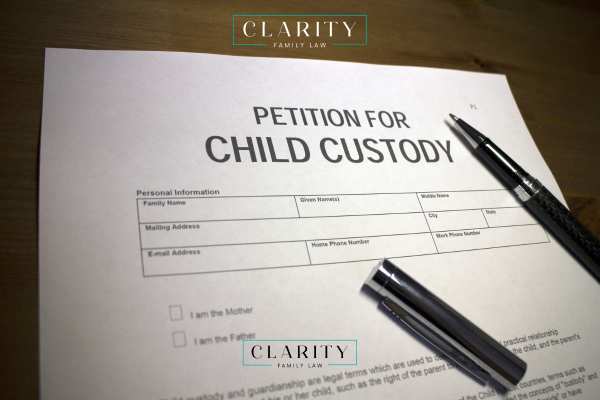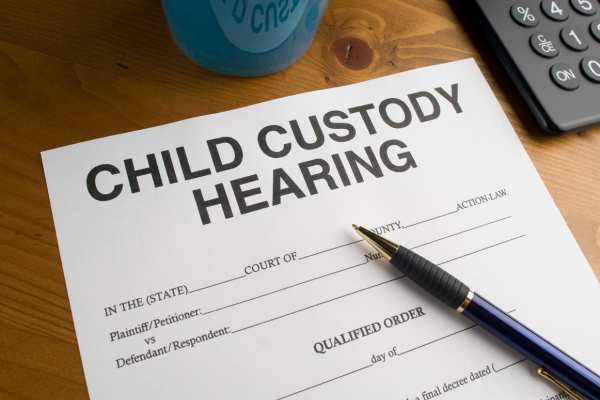Reaching a custody agreement during a divorce can be one of the most challenging and emotional aspects of the process. Parents must navigate their individual desires while focusing on what is best for their children. A successful custody agreement balances the needs of both parties, ensuring that the children maintain strong relationships with each parent. It’s important to take time to understand your rights and responsibilities as a parent during this time, and to ensure that any agreement is clear, fair, and legally sound.
Whether you’re negotiating directly with your spouse or working through mediation, having professional legal guidance can help you navigate this difficult journey. An experienced family law attorney can provide clarity, ensuring that your custody agreement serves your family’s best interests. Call us at (313) 513-1919 to consult with a skilled custody attorney in Dearborn who can support you in securing the best possible outcome for your children and your future.
Understanding Custody Agreements
A custody agreement is a legal document that outlines how parents will share responsibilities for their children after a divorce or separation. It specifies where the child will live, who will make major decisions regarding their upbringing, and how visitation will be handled. This agreement is essential in ensuring that both parents understand and adhere to the terms of custody to promote the best interests of the child.
Legal custody refers to the authority to make significant decisions about the child’s life, such as choices related to education, healthcare, and religion. Physical custody, on the other hand, determines where the child will live and which parent will provide day-to-day care. Parents may share legal and/or physical custody, depending on what the court or the parents agree upon.

Joint custody occurs when both parents share either physical or legal custody (or both). This means they will collaborate on major decisions, and the child may live with both parents according to a specified schedule.
Sole custody, however, grants one parent the primary responsibility for the child, either in terms of physical living arrangements or decision-making authority. In such cases, the non-custodial parent may still have visitation rights and some involvement in decisions.
The best interests of the child are the guiding principle used by courts when evaluating and approving custody agreements. Courts look at factors such as the child’s physical and emotional needs, the stability of each parent’s home, and the parents' ability to cooperate in raising the child. The goal is to ensure that the custody arrangement promotes the child’s overall well-being, safety, and continuity in their life.
Key Elements of a Custody Agreement
A custody agreement is essential for outlining how parents will share responsibilities for their child after separation or divorce. Here are the key elements to consider:
Include a Custody Schedule
This section details when the child will reside with each parent. It includes specific arrangements for weekdays, weekends, holidays, and school breaks. A clear schedule helps prevent misunderstandings and ensures the child’s needs are met consistently.
Establish Who Has Decision-Making Authority
This element specifies who has the right to make significant decisions regarding the child's life, such as education, healthcare, and religious upbringing. It can be structured as sole decision-making by one parent or shared decision-making between both parents.
Cover Visitation Rights
The agreement should outline the visitation rights of the non-custodial parent. This includes the frequency and duration of visitations, as well as any special arrangements for holidays and vacations to ensure meaningful time with the child.
Outline a Dispute Resolution Plan
To address potential future disagreements, the agreement should include a plan for resolving conflicts. This may involve mediation or another form of alternative dispute resolution, which can help parents reach an agreement without resorting to going to family court.
Create Guidelines for Modifying the Agreement
Life circumstances can change, so the agreement should contain provisions for how it can be modified. This includes the process for requesting changes, ensuring both parents are involved, and considering the child's best interests in any amendments.
These elements are crucial for fostering a cooperative co-parenting relationship and ensuring the child's well-being in the long term.
Steps to Reach a Custody Agreement
Reaching a custody agreement involves several steps to ensure that the arrangement serves the best interests of the child and is fair to both parents. Here’s a detailed guide on the process:

- Assess Your Priorities and Goals: Begin by identifying your primary goals and concerns regarding custody. Consider what is in the best interest of your child, including their daily routines, educational needs, and emotional well-being.
- Gather Necessary Information: Collect all relevant information that might impact custody decisions. This includes work schedules, the child’s school schedule, and any other commitments that may affect parenting time.
- Communicate with the Other Parent: Open a dialogue with the other parent about custody arrangements. Be honest and respectful, focusing on finding solutions that work for both parties and, most importantly, for the child.
- Consider Mediation: If you and the other parent are having difficulty reaching an agreement, consider mediation. A neutral third party can help facilitate discussions and negotiate a mutually acceptable custody arrangement.
- Draft a Custody Agreement: Work together to draft a custody agreement that outlines the details of the custody arrangement. This document should include:
- Custody Schedule: Specific times and days each parent will have custody.
- Decision-Making Authority: Who will make decisions about the child's education, health care, and other important matters.
- Visitation Rights: Details about visitation for the non-custodial parent, including holidays and special occasions.
- Dispute Resolution: A plan for resolving any future disagreements about the custody arrangement.
- Modification Guidelines: How and under what circumstances the agreement can be modified in the future.
- Review and Revise the Agreement: Once a draft is complete, review it thoroughly. Both parents should have an opportunity to suggest changes and revise the document as needed to ensure it meets both parties' needs and complies with legal requirements.
- Seek Legal Advice: Consult with a family law attorney to review the agreement. An attorney can ensure that the agreement complies with state laws and accurately reflects both parties’ intentions.
- Finalize and File the Agreement: Once both parents agree on the terms, finalize the custody agreement and submit it to the court for approval. The court will review the agreement to ensure it is in the best interests of the child before issuing an official order.
By following these steps, parents can work towards a fair and effective custody arrangement that prioritizes the well-being of their child.
What Happens if We Cannot Reach a Custody Agreement?
If parents cannot reach a custody agreement, the matter may be resolved through the court system. Here’s what typically happens:
- Court Intervention: The case may be taken to family court, where a judge will evaluate the circumstances and make a custody determination. This process often involves a hearing where both parents can present their cases.
- Evaluation of Best Interests: The court will prioritize the child’s best interests when making a decision. Factors considered may include the child’s age, emotional ties to each parent, stability of the home environment, and the parents’ ability to provide for the child’s needs.
- Mediation Requirement: In many jurisdictions, courts require parents to attempt mediation before proceeding to a hearing. Mediation provides an opportunity for parents to work with a neutral third party to resolve custody disputes amicably.
- Custody Evaluation: In some cases, the court may order a custody evaluation, where a professional, such as a psychologist or social worker, assesses the family dynamics and makes recommendations regarding custody and visitation.
- Temporary Orders: While the case is pending, the court may issue temporary custody orders to provide immediate guidance on living arrangements and visitation schedules.
- Final Custody Order: After considering all evidence and arguments, the judge will issue a final custody order, which will outline the custody arrangement and visitation rights. This order is legally binding and enforceable.
If parents are dissatisfied with the court's decision, they may have the option to appeal, but this can be a lengthy and complex process. Overall, reaching a custody agreement collaboratively is often preferable to litigation, as it can foster better co-parenting and reduce conflict.
Can We Modify a Custody Agreement Later?
Yes, custody agreements can be modified later, but certain conditions must be met. Here’s how the process typically works:
- Legal Basis for Modification: To modify a custody agreement, there generally needs to be a significant change in circumstances. This could involve changes in the child’s needs, a parent’s living situation, employment, health issues, or other relevant factors that affect the child’s well-being.
- Filing for Modification: One parent must file a petition with the court to seek a modification of the existing custody agreement. This petition should outline the reasons for the requested changes and any supporting evidence.
- Best Interests of the Child: The court will assess the proposed modification based on the best interests of the child. This is the primary consideration in custody cases, and any proposed changes must demonstrate how they would better serve the child's needs.
- Mediation: In some jurisdictions, the court may require parents to participate in mediation before a hearing. This aims to encourage cooperation and possibly reach an agreement without the need for litigation.
- Court Hearing: If mediation fails or is not required, a court hearing will be scheduled. Both parents will present their arguments, and the judge will consider evidence before making a decision.
- Final Decision: After evaluating all the information, the court will either grant or deny the modification request. If granted, a new custody order will be issued.

It's important for parents to maintain open communication and prioritize the child's best interests throughout the process. Legal advice can also be beneficial when seeking modifications to ensure all procedures are followed correctly.
What if a Parent Violates a Custody Agreement?'
If a parent violates a custody agreement, it's important to take specific steps to address the situation while protecting your legal rights and your child’s best interests. Here's what you should do:
- Document the Violation: Keep detailed records of each instance where the custody agreement has been violated. Include dates, times, and descriptions of what happened. Evidence such as text messages, emails, or witnesses can also be helpful if the case goes to court.
- Communicate with the Other Parent: If possible, calmly reach out to the other parent to discuss the violation and seek an explanation. Misunderstandings or scheduling conflicts may be the cause, and open communication might resolve child custody issues without legal intervention. Ensure that any communication is documented.
- Refer to the Custody Agreement: Review the child custody terms outlined in the agreement to ensure that both parties understand what is required. If there’s confusion about the obligations or the schedule, clarify the expectations set forth in the agreement. This step is essential if the violation stems from misinterpretation.
- Consider Mediation: If communication doesn't resolve the issue, consider mediation as an option. A neutral third party can help both parents come to an understanding and ensure that the agreement is followed moving forward. Child custody mediation may also prevent the need for court involvement.
- File a Motion with the Court: If violations continue, you may need to take legal action. You can file a motion with the court to enforce the custody agreement. The court may impose penalties on the violating parent, such as fines, a modification of the agreement, or even contempt of court.
- Seek Legal Advice: Consulting a family law attorney is important if the violation is persistent or severe. They can help you understand your legal options and guide you through the process of filing for enforcement or modification of the agreement if necessary.
- Request a Modification: If the violations occur because the current custody arrangement is no longer practical, you might consider requesting a modification to the custody order. The court will reevaluate the arrangement based on the child’s best interests and may adjust the terms accordingly.
Handling custody violations promptly and legally can help protect your parental rights and maintain stability for your child.
Need Help Reaching a Custody Agreement? Contact Us for Legal Support
Navigating the complexities of a custody agreement during a divorce can be emotionally draining and legally challenging. Ensuring that the agreement protects your rights and prioritizes the well-being of your children is crucial. By seeking experienced legal support, you can create a solution that works for everyone involved.
If you’re facing custody negotiations, don’t go through it alone. Reach out to our skilled family law team today for personalized guidance. Let us help you create a fair and balanced custody agreement that puts your family’s future first. Contact us to schedule a consultation.
